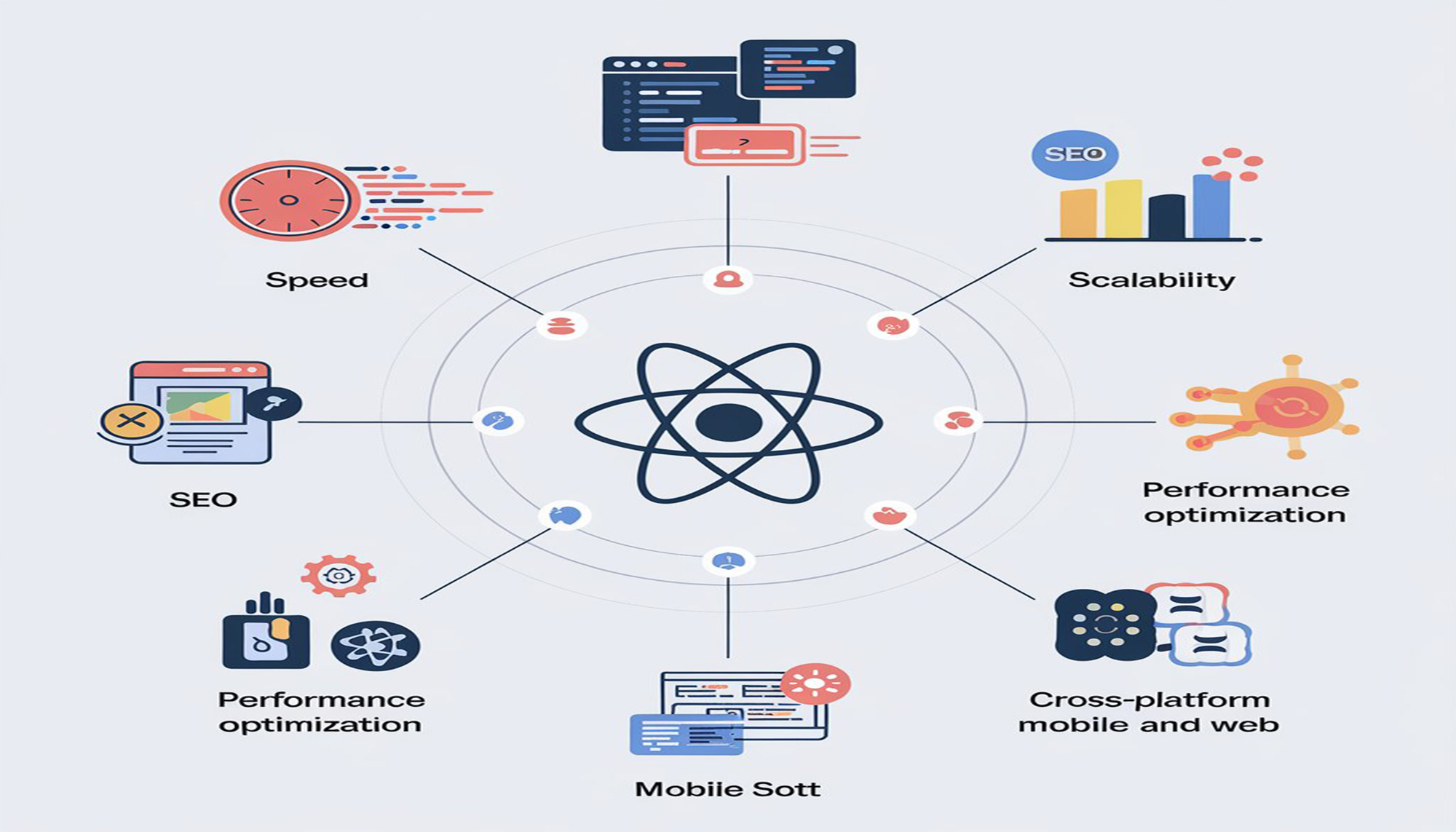ReactJS: Key Advantages and why to use it in 2025
Smash Code
Mar 19, 2025

In the modern web development world, with front-end technologies undergoing constant change, ReactJS has proven its relevance and still ruling the IT industry.
Powering many interactive and seamless user experiences, it's a favourite among developers and a valuable asset for businesses.
ReactJS is not just another JavaScript library; it helps developers create fast, scalable, and user-friendly applications. Out of the top one million websites, 155,670 use React.
Let's explore some major advantages of ReactJS and see if it's the right fit for your needs.
What Is ReactJS and How Does It Work?
ReactJS, often simply referred to as React, is an open-source JavaScript library developed and maintained by Meta, specifically designed for building user interfaces. What distinguishes React from other web development tools is its use of components.
Think of building a website like assembling a LEGO set—each piece or component can be developed, tested, and reused independently. This modular approach makes React a preferred choice for developers working on large-scale applications.
What’s truly remarkable about React is that it doesn’t update the entire webpage whenever a change occurs. Instead, it utilizes a virtual Document Object Model (DOM), which is essentially a lightweight copy of the real DOM. React compares this virtual version with the actual DOM, determines what has changed, and updates only the specific elements that need to be addressed.
This technique is what keeps React applications incredibly fast, even when they are handling complex tasks behind the scenes.
While the debate between web design and web development continues, ReactJS effectively combines both by allowing developers to create rich user interfaces. This library helps developers manage component states, making it easier to build dynamic UIs that look and function well, without the slow performance often seen in traditional web apps.
By using well-known UI patterns, developers can make designs that are easy to use and interactive. This improves the user experience and ensures consistency throughout the entire application.
Here are 8 Major Benefits of ReactJS

1. Manage Large-Scale Apps
As businesses scale, the complexity of their digital platforms increases. Developing a strong B2B website application can be challenging, but ReactJS simplifies the process by breaking the interface into manageable components.
Vasyl Magometa, CTO and Co-founder of Reenbit states, "ReactJS’s component-based structure promotes modular, reusable code for scalability and team collaboration." He adds, “Features like concurrent mode and server-side rendering boost performance, while hooks streamline state management.”
This makes ReactJS the preferred choice for large applications, as its ecosystem, including Redux and Next.js, supports growth and maintainability for complex, high-performance apps.
2. SEO-Friendly
In the competition for better visibility on Google’s search results, having a fast and SEO-friendly website is essential. Although traditional JavaScript frameworks often struggle with SEO, React's server-side rendering (SSR) capabilities, typically supported by Node.js, enable your pages to load quickly and be easily indexed by search engines.
As a result, your business is more likely to achieve a higher ranking on Google, which can drive organic traffic and decrease the reliance on paid advertisements.
3. Optimized Performance

Time is money, and slow websites can lead to more than just frustration — they can result in lost revenue. React’s use of the virtual DOM allows it to update only the parts of the webpage that need changes, which helps avoid expensive operations that could slow down the entire application.
As Fabricio Defelippe, CEO of Tuxdi, explains, “In managing performance optimization for data-intensive applications with ReactJS, we focus on efficiency at scale. To handle large datasets, we utilize list virtualization with tools like react-window, ensuring smooth performance without overwhelming the DOM.”
Time is money, and slow websites can lead to more than just frustration — they can result in lost revenue. React’s use of the virtual DOM allows it to update only the parts of the webpage that need changes, which helps avoid expensive operations that could slow down the entire application.
Defelippe also emphasizes the significance of efficient state management: “We minimize redundant updates by using useReducer and leverage global state management tools like Redux to maintain performance as our applications grow.”
These combined strategies ensure that even in the most data-intensive environments, ReactJS applications remain fast and scalable.
4. Cross-Platform Compatibility with React Native

Why spend twice the time and money creating separate web and mobile applications when React allows you to do both? React Native, a framework based on ReactJS, enables you to build mobile applications for both iOS and Android using the same component-based approach. This cross-platform capability offers your business greater flexibility while maintaining a consistent user experience.
When to use ReactJS?
React excels in many significant areas.
5. Single-Page Applications (SPAs)
For interactive web apps demanding a seamless user experience like Facebook or Instagram, React's dynamic updates without full page reloads are ideal for creating smooth and engaging SPAs.
6. Large-Scale Projects
React's component-based architecture enables modularity and scalability, which are crucial for managing complex applications. This facilitates easier maintenance, scaling, and future enhancements.
7. Real-Time Data Updates
React's virtual DOM efficiently updates only changed elements, ensuring smooth and prompt data presentation in real-time applications like news feeds or financial dashboards.
8. Cost-Effective Solutions
React's reusable components and robust ecosystem reduce development time and costs. Leveraging React Native for both web and mobile further optimizes budgets by minimizing platform-specific development.
FAQ about ReactUs
What is the main purpose of ReactJS?
The primary purpose of ReactJS is to build user interfaces for web applications. It is particularly effective at creating interactive and dynamic UI components that can be reused and easily maintained.
Is ReactJS suitable for small businesses or startups?
Yes, ReactJS is suitable for businesses of all sizes, including small businesses and startups. Its strong community support and extensive ecosystem enable startups to implement cost-effective solutions and get started quickly.
Can ReactJS integrate with existing systems and technologies?
ReactJS is capable of integrating with a variety of existing systems and technologies. Its flexibility allows it to work seamlessly with different back-end technologies, APIs, and databases. Many businesses utilize React alongside popular tools and frameworks such as Node.js, Express, and MongoDB.
In conclusion, React's speed, scalability, and maintainability have established it as a leading choice for web development.